
Browse an alphabetical list of photographs. These historical images portray people, places, and events before, during, and after World War II and the Holocaust.
<< Previous | Displaying results 51-75 of 79 for "Photo" | Next >>
Photograph of Esther Lurie and a friend, Jose, who were both students at the Institute of Art in Brussels. Here they are enjoying refreshments on an outdoor terrace in the early 1930s. Lurie would later flee Europe as war became imminent. Brussels, Belgium, 1931–1933.
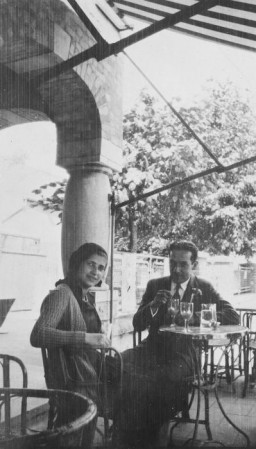
Visitors view the eternal flame in the Hall of Remembrance at the United States Holocaust Memorial Museum.
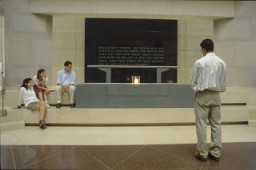
The American Eugenics Society displays an exhibit on health and eugenics at the Kansas Free Fair in 1929.
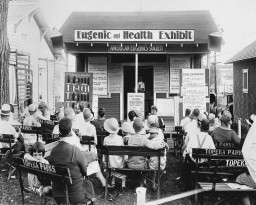
Eugenics poster entitled "The Nuremberg Law for the Protection of Blood and German Honor." The illustration is a stylized map of the borders of central Germany upon which is imposed a schematic of the forbidden degrees of marriage between Aryans and non-Aryans and the text of the Law for the Protection of German Blood. The German text at the bottom reads, "Maintaining the purity of blood insures the survival of the German people."
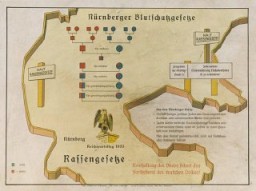
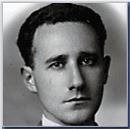
The last group of European Jewish refugees leaves a British detention camp for Israel. Cyprus, February 10, 1949.
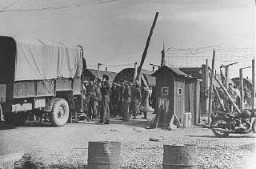
Eva, Alfred, and Leane Munzer. Infant Alfred survived in hiding; his sisters were discovered and killed in Auschwitz.
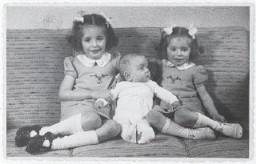
A color photograph of Eva Justin interviewing a Romani woman interned in a "Gypsy camp." Vienna, Austria, 1940. During the Nazi era, Dr. Robert Ritter was a leading authority on the racial classification of people pejoratively labeled “Zigeuner” (“Gypsies”). Ritter’s research was in a field called eugenics, or what the Nazis called “racial hygiene.” Ritter worked with a small team of racial hygienists. Among them were Eva Justin and Sophie Ehrhardt. Most of the people whom Ritter studied and…
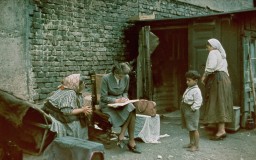
British Zionist leader Norman Bentwich (left) with Henri Berenger, French delegate to the Evian Conference on Jewish refugees. Evian-les-Bains, France, July 1938.

Postcard showing Evian-les-Bains, a French resort of Evian on Lake Geneva, at the time of the 1938 Evian conference on refugees.
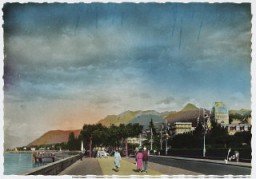
Photographs, artifacts, and a map presented as evidence at the International Military Tribunal. Nuremberg, Germany, between November 20, 1945, and October 1, 1946.
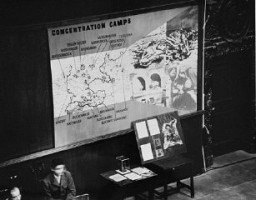
In German-occupied Paris, the fence around a children's public playground bears a sign forbidding entrance to Jews. Paris, France, November 1942.
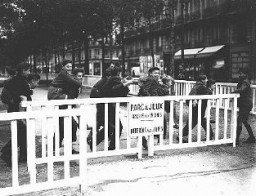
Execution of prisoners, most of them Jewish, in the forest near Buchenwald concentration camp. Germany, 1942 or 1943.
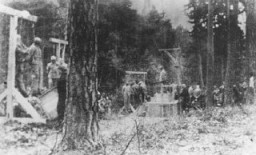
A Romanian firing squad prepares to execute former Romanian prime minister Ion Antonescu. Camp Jivava, near Bucharest, Romania, June 1, 1946.

Arrow Cross Party members execute Jews along the banks of the Danube River. Budapest, Hungary, 1944.
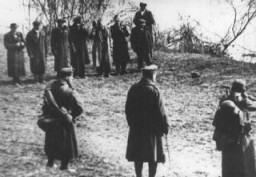
The execution of Poles in the Barbarka Forest by members of the Selbstschutz (ethnic German self-defense organization). An SS officer can be seen standing in the background. Torun, Bydgoszcz, Poland, October 1939.
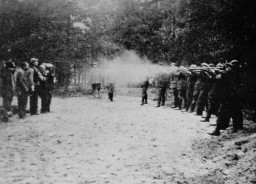
German police execute a group of Poles at the edge of the Uzbornia Grove just outside of Bochnia. Altogether, 51 residents of Bochnia and the vicinity were shot in reprisal for an assault on a German police station by members of the Polish underground organization "Orzel Bialy" (White Eagle) on 16 December 1939. Bochnia, Krakow, Poland, December 18, 1939.
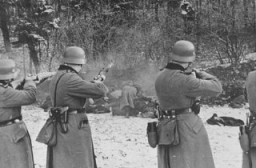
The execution of Polish civilians by the Selbstschutz (ethnic German self-defense organization) and SS in the forest near Tuchola. Bydgoszcz, October 27, 1939.
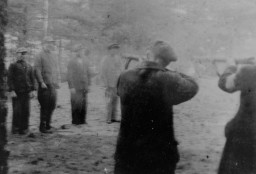
Execution of Polish prisoners of war near Ciepielow in September 1939. Some of the 300 Polish POWs who were executed here by firing squad are visible. In the background is a Wehrmacht soldier who participated. Ciepielow, Radom, Poland, September 1939.

Teachers from Bydgoszcz and the surrounding area a few moments before their execution by firing squad in the "Valley of Death" near Fordon. The first in line is Wladyslaw Bielinski, a primary school teacher from Wiag. The Nazis sought to destroy Polish culture and the Polish nation, and eliminate any resistance, by arresting and murdering Poles. German police, SS, and army units and ethnic German “self-defense” forces shot thousands of Polish civilians. Among those shot were wealthy landowners, some…
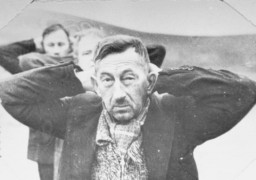
Arrow Cross Party members execute Jews along the banks of the Danube River. Budapest, Hungary, 1944.
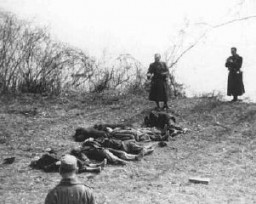
Execution site at the Ploetzensee prison. At Ploetzensee, the Nazis executed hundreds of Germans for opposition to Hitler, including many of the participants in the July 20, 1944, plot to kill Hitler. Berlin, Germany, postwar.
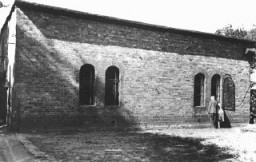
Execution site in the Flossenbürg concentration camp, seen here after liberation of the camp by US armed forces. Flossenbürg, Germany, after May 1945.
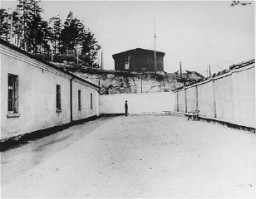
Execution site in the Ponary forest outside the Vilna ghetto. Lithuania, 1941.
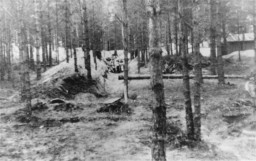
An exhibition at the United States Holocaust Memorial Museum demonstrated how the Nazis used the Protocols of the Elders of Zion to spread hatred of Jews. Washington, D.C., 2006-2018.
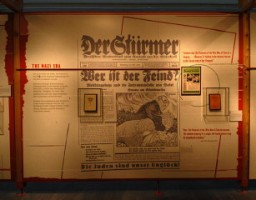
We would like to thank Crown Family Philanthropies, Abe and Ida Cooper Foundation, the Claims Conference, EVZ, and BMF for supporting the ongoing work to create content and resources for the Holocaust Encyclopedia. View the list of donor acknowledgement.